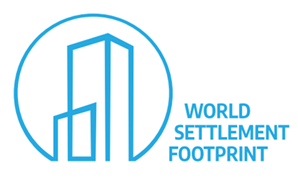The World Settlement Footprint (WSF) 3D provides detailed quantification of the average height, total volume, total area and the fraction of buildings at 90 m resolution at a global scale.
It is generated using a modified version of the World Settlement Footprint human settlements mask derived from Sentinel-1 and Sentinel-2 satellite imagery in combination with digital elevation data and radar imagery collected by the TanDEM-X mission.
The framework includes three basic workflows: i) the estimation of the mean building height based on an analysis of height differences along potential building edges, ii) the determination of building fraction and total building area within each 90 m cell, and iii) the combination of the height information and building area in order to determine the average height and total built-up volume at 90 m gridding.
In addition, global height information on skyscrapers and high-rise buildings provided by the Emporis database is integrated into the processing framework, to improve the WSF 3D Building Height and subsequently the Building Volume Layer.
A comprehensive validation campaign has been performed to assess the accuracy of the dataset quantitatively by using VHR 3D building models from 19 globally distributed regions (~86,000 km2) as reference data.
The WSF 3D standard layers are provided in the format of Lempel-Ziv-Welch (LZW)-compressed GeoTiff files, with each file - or image tile - covering an area of 1 x 1 ° geographical lat/lon at a geometric resolution of 2.8 arcsec (~ 90 m at the equator). Following the system established by the TDX-DEM mission, the latitude resolution is decreased in multiple steps when moving towards the poles to compensate for the reduced circumference of the Earth.
Click here to access the 3D viewer of the WSF 3D data
Product Information:
- Product Name: World Settlement Footprint (WSF) 3D - Global, 90m
- Release: 2023-02-15
- Contact: WSF Team, Thomas Esch
Data Information:
- Satellite: TanDEM-X, Sentinel-1, Sentinel-2
- Format: Cloud Optimized GeoTIFF
- Spatial Resolution: 90 x 90 m
- Period: 2012 (TanDEM-X) - 2019 (WSF)
- Coverage: Global
- License: CC BY 4.0
Data:
References:
- Thomas Esch, Elisabeth Brzoska, Stefan Dech, Benjamin Leutner, Daniela Palacios-Lopez, Annekatrin Metz-Marconcini, Mattia Marconcini, Achim Roth, Julian Zeidler, World Settlement Footprint 3D - A first three-dimensional survey of the global building stock, Remote Sensing of Environment, Volume 270, 2022, 112877, ISSN 0034-4257,https://www.sciencedirect.com/science/article/pii/S0034425721005976
- Esch, T.; Zeidler, J.; Palacios-Lopez, D.; Marconcini, M.; Roth, A.; Mönks, M.; Leutner, B.; Brzoska, E.; Metz-Marconcini, A.; Bachofer, F.; Loekken, S.; Dech, S. Towards a Large-Scale 3D Modeling of the Built Environment-Joint Analysis of TanDEM-X, Sentinel-2 and Open Street Map Data. Remote Sens. 2020, 12, 2391. https://doi.org/10.3390/rs12152391
- https://www.dlr.de/content/de/artikel/news/2022/02/20220510_dlr-daten-zeigen-wo-menschen-durch-naturkatastrophen-bedroht-sind.html
DLR © 2023




